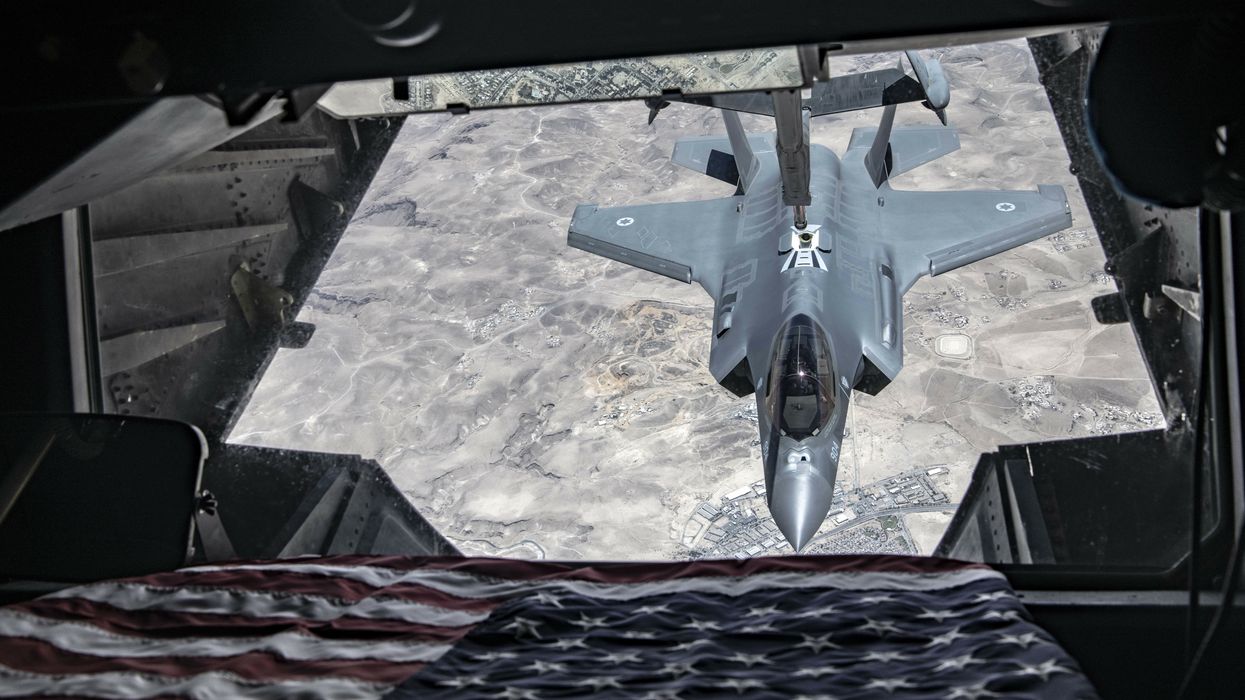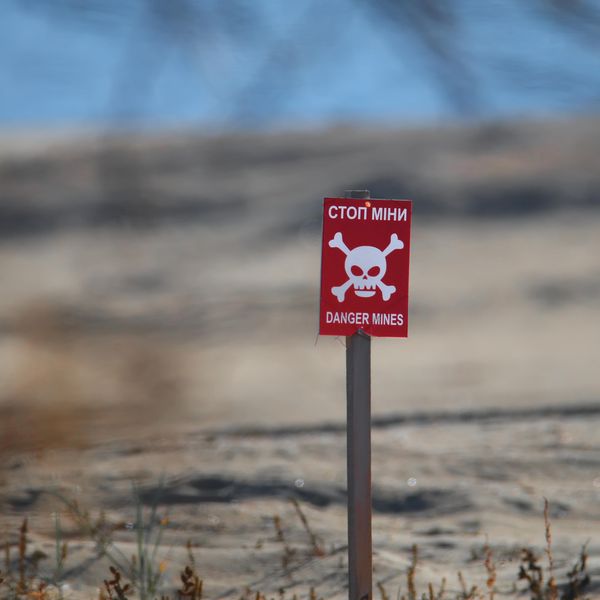The Iran policy debate in Washington suffers from a poverty of ideas. Despite the trail of failures left behind by policies based on coercion and threats over the last two decades, the debate over Iran’s nuclear program usually comes back to some combination of backfiring sanctions and reckless proposals for war and regime change.
A new report by the Center for a New American Security (CNAS) is just the most recent example of this. The report describes the findings of exercises that the think tank conducted, and it concludes by recommending that the U.S. broaden its threats of military action to include targeting the Iranian political and military leadership as well as their nuclear facilities. Nothing could be worse for the cause of nonproliferation or for U.S. interests than to seek regime change again.
It seems incredible that anyone in Washington still floats the options of war and regime change 20 years after the invasion of Iraq showed how disastrous these policies are, but there has been no real learning from the crime of the Iraq war. One of the main reasons why Washington hasn’t learned from the Iraq war is that there was never any accountability for any of its architects and cheerleaders, and the incentives in our debates still tend to favor aggressive and militarized policies. Instead of repudiating wars for regime change, many people in Washington have no problem using the same fatally flawed policies against other countries.
There is no question that the CNAS report is calling on the U.S. to threaten the use of force and then to use it for the purposes of regime change if the Iranian government does not yield. The report’s authors make it clear that “it should be stressed that further advancement risks military action targeting Iran’s regime.” At one point, the report recommends that “U.S. leaders should consider sending private messages to Iran’s political and military leaders indicating its resolve to see them removed from power should they not abandon the nuclear program.”
The authors say that the United States can leverage threats of regime change and its already demonstrated capability to assassinate Iranian military leaders to “convince Iran’s leaders that Iran’s nuclear program is a millstone around their necks, rather than an insurance policy that ensures their survival.”
These recommendations don’t appear to have been thought through at all. Few things are more likely to convince the Iranian leadership of the necessity of a nuclear deterrent than explicit threats to topple them. If the Iranian leadership’s primary concern is self-preservation, as the report acknowledges, it makes no sense to threaten the leadership’s survival. Because of that desire for self-preservation, Iran’s leadership may decide to take greater risks than it has in the past by crossing the threshold of becoming a nuclear weapons state.
As usual, the militarized “solution” to the nuclear issue seems all but guaranteed to lead to the outcome that its advocates claim not to want.
We also need to pay attention to how the Iranian government has responded to other coercive measures and threats before now. Before the U.S. reneged on the nuclear deal and began its “maximum pressure” sanctions campaign, Iran was in full compliance with the nuclear deal and remained in compliance for a full year after the U.S. quit. Then, in response to sustained economic warfare and Israeli assassination and sabotage attacks, the Iranian government significantly expanded its nuclear program. Economic pressure and physical attacks on Iranian facilities have succeeded only in driving Iran to escalate in response. Why would direct threats against Iran’s top leadership lead to different results?
The Iranian leadership would have no guarantee that the U.S. wouldn’t turn around and attack them after they complied. The demand to make concessions under threat of attack would be taken as an insult. Depending on what is meant by abandoning “the nuclear program,” the demand itself is probably so far-reaching that it is a non-starter for their government. The Iranian government has invested too much time, effort, and prestige in its nuclear program to give it up entirely. Threatening weaker states with attack is a despicable practice, and it is also one that usually inspires angry resistance rather than submission.
The report admits at the very end that military action against Iran “risks an Iranian military response and an escalation into war,” but even this minimizes the danger. It is obvious that taking military action for the express purpose of removing the existing leadership from power is already a war. It guarantees that Iranian forces and proxies will fight back. This would not only fail to resolve the nuclear issue in a satisfactory way, but it would plunge the U.S. and the wider region into a new and completely unnecessary conflagration of our making.
The CNAS report has nothing to say about international law, but it needs to be emphasized that launching a military attack on Iranian territory, whether it is aimed at nuclear facilities or at a wider range of targets, is nothing less than criminal aggression. The U.S. has no legal right to use force against Iran, and if our government did as this report recommended it would be flagrantly violating the U.N. Charter.
After all, Article 2(4) of the Charter says, “All Members shall refrain in their international relations from the threat or use of force against the territorial integrity or political independence of any state, or in any other manner inconsistent with the Purposes of the United Nations.” It is not only the use of force that violates the Charter, but the threat to use it as well. Using force against Iran in an attempt to compel it to give up some or all of its nuclear program would be the illegal act of a rogue state.
What makes all this talk of war and regime change in Iran even more maddening is that it is absolutely not necessary for the security of the United States or any other state. Iran does not have a nuclear weapons program, and according to our government, it has not had one for the last 20 years. It would be better if Iran’s nuclear program were under the tighter limits of the Joint Comprehensive Plan of Action (JCPOA), but even if it is not, Iran is still a member of the Non-Proliferation Treaty (NPT).
Iran is not currently seeking to build nuclear weapons. Despite the reckless and provocative actions of the U.S. and Israel that have given the Iranian government additional incentives to pursue weaponization, Iran has not yet crossed that line. Judging from the past 20 years, the Iranian government doesn’t seem to want to cross that line unless it is given no other choice. If the U.S. started to threaten them directly with regime change, Iran’s leadership might decide that it is their only remaining option.
Regime change is a morally and strategically bankrupt idea, and it is a disgrace for the U.S. that it is bandied about Washington as if it were a serious policy option. If Americans want to have a saner and more peaceful foreign policy, one of the first things that needs to happen is to banish regime change from the policy discussion once and for all.
















